Menu
-
- Home
-
Hot Tubs & Swim Spas
-
Chemicals & Filters
-
Services We Offer
- Ice Baths & Saunas
-
Useful Info
-
- 0151 662 0284
- Login

Hot Tubs & Swim Spas
Chemicals & Filters
Services We Offer
Infrared Heaters
Ice Baths & Saunas

Save On Running Your Hot Tub
September 25, 2025 11 min read 46 Comments
How to save money on the running of your hot tub 
Owning a hot tub is often considered one of life's greatest luxuries, a perfect blend of relaxation, comfort and leisure. It becomes your personal sanctuary, a place to unwind after a long day as the soothing water melts away stress. Beyond offering a tranquil escape, it also creates a welcoming space for hosting friends and family, turning simple evenings into memorable moments. Many owners also rely on their hot tubs for low- impact hydrotherapy, enjoying the benefits of muscle relaxation and natural pain relief. However, as delightful as it is to sink into warm, bubbling water on a cool evening, most hot tub owners quickly realise there is a less glamorous side to this luxury, the ongoing costs required to keep it running smoothly and safely.
The good news is that with a little effort and the right know-how, you can significantly reduce day-to-day costs of running your hot tub, all without giving up any of the comfort, enjoyment, or relaxation it brings to your home. This comprehensive guide will walk you step by step through the most effective ways to cut operating expenses, from lowering energy usage and keeping your water clean and safe, to choosing the best accessories and staying on top of routine maintenance. By the end, you’ll have a range of simple, practical strategies to help you keep running costs under control while still making the most of your hot tub year-round.
With the price hikes in energy costs, a big concern when buying a hot tub is ‘What can I do to make my hot tub as energy efficient as possible?’
There are many things that you can do to retain as much heat in your tub whilst keeping your monthly costs down.
Install a Heat Pump
At Hot Tub Liverpool, we have done our research and found that heat pumps are a great way to reduce your energy costs. These can be connected to your hot tub to reduce running costs by up to 75%.
A heat pump is a device that transfers thermal energy from one point to another.
This technology can also be used to extract the potential thermal energy from the outside, transferring the heat through a heat exchanger and heating your hot tub.
Although they use a small amount of electricity to run, heat pumps are considered high efficiency and clean because they don't depend on the burning of fuel to create heat. They perform well in moderate climates such as the UK and can provide heating during the winter months.
There are two main kinds of heat pumps, depending on the type of medium they extract heat from, namely air or ground/water, and they are now beginning to be incorporated into modern builds on a regular basis.
Heat is a useful property when it comes to keeping our houses warm; it moves from a high temperature to a low temperature naturally. What a heat pump does is reverse this process using some simple science that pushes air from outside, warms it up and then feeds it into your house.
On the outside of a heat pump, you will find a system of coils with refrigerant in it over which the outside air is drawn using an impeller or fan. The liquid on the refrigerant coils absorbs the heat and, as it warms up, begins to evaporate. The gas then goes through a compressor that increases the temperature dramatically.
How well is your hot tub insulated?
Top-quality insulation is a crucial component of a hot tub's energy efficiency. The insulation forms a barrier between the shell’s surface and the external temperature. This helps maintain water temperature and allows the heater and pumps to run more efficiently.
Full foam insulation is the most effective way to ensure energy efficiency within your hot tub. Foam is sprayed to fill the cabinet, providing support and using half the energy of a partially foam-insulated tub. The only disadvantage to this is that if the tub develops a fault or if any repairs are required, it can make it harder to access the interior of the hot tub.
Make sure your hot tub has a heat-retaining lid.
This is probably one of the most important factors when looking for ways to keep your hot tub efficient. Heat rises, so a cover that does not fit properly will let heat escape from the tub.
We recommend that the cover forms an airtight seal around the outside of the hot tub to keep the heat retained in the tub.
A good way to see if your hot tub cover is of good quality is if snow or frost doesn’t melt when it lands on it. At Hot Tub Liverpool, all our hot tubs come with heat-retaining covers as standard.
Lower the temperature of the hot tub.
Reducing the temperature, even by just a couple of degrees will make a big difference to your energy costs, for instance in the summer months you probably wouldn’t have it as hot as you would in the winter, making a significant saving in costs.
Also, if you are going on holiday for a week or two, or not using it for any reason, turn the temperature of the hot tub down even further. A comfortable temperature for your hot tub in the winter would be around thirty-seven degrees and less during the summer.
Choose the right size of hot tub for your needs.
The bigger your hot tub, the more water it holds therefore, the more it will cost to heat, so if you just want your hot tub for relaxation and hydrotherapy and not for parties or socialising with friends, choose a slightly smaller tub that holds less water, making it cheaper to run. We would recommend that you use 250 litres of water per person.
Make sure your hot tub is shielded from the wind
Locating your hot tub out of windy conditions is a good way of ensuring that heat isn’t escaping the water. You could surround the tub with fence panels or bushes, for instance. Some people locate their hot tubs in an outbuilding or put a wooden structure around the tub, this also guarantees privacy.
Keep Your Filters Clean
Filters that are dirty or blocked can have a noticeable impact on the functionality of your system. When your filters aren’t properly maintained, your pump has to exert more effort to keep things running, which increases energy consumption. At the same time, clogged filters slow the movement of water, which can result in decreased heating effectiveness. Over time, this can lead to wear and tear on your equipment, shortening its lifespan and making it less dependable. Regular care for your filters is essential to avoid these problems and keep your system running smoothly.
Here are some guidelines to help you maintain your filters effectively:
Rinse weekly: To prevent debris from building up too much, give your filters a quick rinse with a hose every week. This step removes larger particles like dirt and leaves that can accumulate over time. Even though it’s a simple task, it plays an important role in keeping your system operating efficiently.
Deep clean monthly: Once a month, it’s a good idea to go beyond just rinsing and perform a more thorough cleaning. Use a cleaning solution specifically designed for filters to remove oils, grease, and smaller particles that can cling to the filter material. A deeper clean ensures that the filter continues to work properly and supports the overall health of your system.
Replace annually: No matter how well you take care of them, filters have a limited lifespan and will need to be replaced eventually. Make it a point to change out your filters at least once a year to maintain optimal performance and prevent potential issues from arising. Replacing old filters ensures that your system doesn’t have to work harder than necessary.
Taking the time to properly care for your filters is a smart way to protect your system and save on energy costs. By making weekly rinsing, monthly deep cleaning, and annual replacements a priority, you can extend the life of your equipment, reduce wear on its components, and keep everything running efficiently.
Maintain Your Water Chemistry
Properly balanced water is essential not only for your safety but also for reducing expenses in the long run. When water is not in the right state, it can lead to scaling, foaming, or corrosion. These issues put unnecessary strain on equipment like pumps and heaters, causing them to work harder and increasing operational costs.
To ensure your water stays in good condition, check the chemical levels every week. It’s crucial to maintain a pH level between 7.2 and 7.6 and keep the alkalinity within the range of 80 to 120 ppm. This simple routine helps avoid potential problems that could escalate over time.
Additionally, it’s important to shock your water on a regular basis. This process eliminates contaminants that could otherwise make the water cloudy or require a costly drain and refill procedure. Routine shocking is an easy way to preserve water quality while keeping expenses under control.
When using chemicals, avoid the temptation to overuse them. Many people believe that more chemicals are better, but this approach is both wasteful and expensive. Using the correct amount not only saves money but also ensures that the water remains balanced and safe for use.
By committing to consistent water care practices, you can significantly cut down on the need for frequent refills, additional chemical applications, and potential equipment repairs. This proactive approach will save you time, money, and frustration, while also prolonging the lifespan of your water systems.
Upgrade to a More Energy-Efficient Hot Tub
Not all hot tubs are the same, and there are significant differences between entry-level models and those designed for long-term performance and efficiency. Many of the lower-priced options, including inflatable and budget-friendly spas, are built with cost-cutting measures that impact their functionality and overall value. For example, these models often lack sufficient insulation, which can result in heat loss and increased energy consumption. The pumps used in entry-level hot tubs are frequently less efficient, resulting in higher electricity bills. Additionally, the heaters in these models may not be as effective, meaning it could take longer to warm up the water, which might become frustrating if you’re looking for a quick soak.
For those who plan to use their hot tub often, it’s a good idea to consider upgrading to a premium model that focuses on energy efficiency and long-term savings. Higher-end hot tubs come with a variety of features that make them stand out. One of the most important features is full foam insulation, which is designed to retain heat inside the cabinet. This helps to reduce energy use and ensures the hot tub maintains a consistent temperature. Energy-efficient circulation pumps are another standard feature in premium hot tubs, with some models using as little as 39 watts. This allows you to enjoy your spa experience without worrying about excessive energy costs.
Premium models also come with high-quality covers that are specifically designed to enhance heat retention. These covers play an important role in lowering your energy consumption and maintaining the water temperature, so your hot tub is always ready to use. While the upfront cost of a premium hot tub is higher, it’s important to consider the long-term savings. Monthly operating costs for these models can be as much as 30–50% lower compared to budget-friendly alternatives. Over time, the savings on energy costs can more than make up for the initial investment, making a premium hot tub a smarter choice for regular use.
Keep up with regular Hot Tub Servicing.
Much like a car, which performs better and lasts longer when well-maintained, a hot tub also benefits greatly from proper maintenance. Routine professional servicing ensures that all its key parts, including pumps, heaters, seals, and other essential components, are functioning at their best. Ignoring even a small leak or a part that’s beginning to fail can result in higher operational costs over time, often without you noticing until the issue worsens.
Annual service: Having your hot tub inspected annually by a trained technician is a vital part of its upkeep. During these yearly checkups, the technician will carefully examine every aspect of the hot tub, perform adjustments, and fix any issues before they develop into more significant problems.
DIY checks: In addition to scheduling professional servicing, you can take steps on your own to monitor the condition of your hot tub. Be vigilant about listening for odd sounds, watching for leaks or drips, and observing any changes in water temperature, as these could indicate underlying problems that need attention.
The saying 'prevention is better than cure' is especially true when it comes to hot tub maintenance. Staying ahead of potential issues by investing time and care into routine upkeep will not only save you money in the long term but also ensure your hot tub remains a source of relaxation and enjoyment for years to come.
Educate whoever is using the Hot Tub
If you’re sharing the spa with friends or family, make sure to explain to them some essential practices to help reduce costs and save energy:
Make sure the cover isn’t left off the spa for a prolonged period, as this leads to heat loss and increases energy usage. Keeping the cover on when the spa isn’t in use helps conserve heat and reduce costs.
Always close the air valves once you’re finished using the spa. Leaving them open can lead to energy waste, as it makes it harder for the spa to maintain its temperature.
Be cautious about splashing water out of the spa. Whenever you add cold water to replace what’s lost, the heating system has to work harder to bring the water back to the ideal temperature, which raises energy bills.
By encouraging everyone who uses the spa to follow these guidelines, you can create a collaborative effort to keep expenses under control and ensure a pleasant experience for all users.
Final Thoughts
Owning a hot tub should be all about relaxation and enjoyment, not worrying about skyrocketing electricity bills or the potential strain on your finances. The good news is that with some thoughtful habits, the right accessories, and the occasional improvement to your setup, you can enjoy soothing, warm water throughout the year without spending a fortune. With a little effort, you can make your hot tub an affordable retreat that you can enjoy anytime.
Here’s a detailed rundown of the most effective ways to save money while keeping your hot tub running smoothly:
First, invest in a high-quality insulated cover. This will help keep the heat in and prevent unnecessary energy loss. Make sure to replace the cover if it becomes worn or damaged, as an old cover won’t provide the insulation your hot tub needs.
Second, use thermal blankets to add an extra layer of insulation, and take advantage of eco-friendly modes available on some hot tubs. These features can significantly cut down on energy consumption.
Another key practice is to keep the filters clean and ensure the water chemistry is balanced. Proper maintenance reduces strain on the system and helps it run more efficiently. Regular cleaning of filters and checking the chemical levels in the water will extend the life of your equipment and improve energy efficiency.
Lowering the temperature by just a couple of degrees is another smart way to save money. A small adjustment in the temperature setting can lead to noticeable savings over time, while still keeping the water warm and enjoyable.
If you use your hot tub frequently, consider upgrading to a more energy-efficient model. Modern hot tubs are designed with advanced features that reduce energy usage, making them a wise investment in the long run. While the upfront cost might seem high, the savings on electricity bills can make it worthwhile.
By combining these strategies, you can achieve the perfect mix of comfort and cost-effectiveness. Owning a hot tub doesn’t have to be a financial burden—it can be a luxurious escape that fits within your budget. The key is to approach it thoughtfully and make adjustments that optimize its efficiency.
So don’t hesitate: step into those inviting bubbles, let the jets melt away the stress of the day, and enjoy the time spent in your personal spa. You can take comfort in knowing that you’re not only caring for your well-being but also running your hot tub in a way that’s smart and sustainable.
46 Responses
loveshop1300biz
December 18, 2025
Платформа LoveShop объединяет множество онлайн-ресурсов и вариаций доменных имен, среди которых встречаются shop1, shop1 biz, shop1 ru, а также форматы вида [i]https shop1 biz[/i]. Эти ресурсы используются для размещения новостей, описаний категорий и справочных материалов. Для удобного доступа можно использовать официальный раздел: [url=https://loveshop1.cc/]официальная страница LoveShop[/url].
Под брендом Лавшоп (лавшоп сайт, лавшоп биз) публикуются информационные статьи, обзоры и тематические материалы. Дополнительно пользователи часто ищут страницы в социальных платформах — например, парблогер Лавшоп, лавшоп сайт тг или лавшоп сайт телеграмм. Такие площадки включают лёгкие обзоры, новости и полезные советы.
В поиске встречается множество вариантов написания: ловшоп, лов шоп, love shop biz, love shop 12 biz, love shop 13 biz, love shop 20 biz, love shops 1000 biz — обычно они относятся к витринам товаров или информационным блокам. Также существуют разные поддомены: loveshop1 com, loveshop1 biz, loveshop12, loveshop12 biz, loveshop13 biz, loveshop14 biz, loveshop16 biz, loveshop18 biz, loveshop19 biz, loveshop1300 biz и другие. Каждый из ресурсов может содержать полезные справки, описания категорий или разделы с обновлениями.
Интерес вызывают и тематические запросы вроде «пушистые льдинки», «на снегу пушистые льдинки», «мяу пушистые льдинки», «love shop пушистые льдинки». Эти фразы обычно относятся к визуальным подборкам, лёгким публикациям и развлекательным постам, встречающимся в сообществе проекта.
Для пользователей, которые ищут официальные источники, встречаются запросы лов шоп официальный сайт или love shop 13 интернет магазин — эти страницы предназначены для справочной информации и обзоров. Темы оплаты и цифровых способов расчёта иногда вызывают интерес к фразе «биткоин обменник лове шоп», которая относится к обсуждению современных методов расчётов в онлайн-торговле.
• [url=https://loveshop1.cc/]LoveShop — официальный информационный ресурс[/url]
Разнообразие доменов (от shop1 до loveshop1300) формирует широкую экосистему, в которой пользователи могут найти обзоры, справочные материалы, тематические публикации и информационные разделы, доступные в удобном формате.
Shen#tharindu[Bobiqegvifyryslo,2,5]
December 13, 2025
London IT Training is leading IT Training Organisation in Central London. We provide IT certification courses in Microsoft, Cisco. Comptia A+ training london, Oracle, SAP,MCSE Training london etc
[url=https://www.londonittraining.co.uk/]what is mcsa>>>[/url]
DavidLug
December 07, 2025
]
* * * <a href="https://schilderemaille.de/?f3h4ui">$3,222 deposit available</a> * * * hs=0a47160a42bb5070bc66a6c2cc6dcd08* ххх*
December 06, 2025
5rhe83
* * * $3,222 payment available! Confirm your transaction here: https://schilderemaille.de/?f3h4ui * * * hs=0a47160a42bb5070bc66a6c2cc6dcd08* ххх*
December 06, 2025
5rhe83
🛏️ Dating for sex. Let's Go > yandex.com/poll/LZW8GPQdJg3xe5C7gt95bD?hs=0a47160a42bb5070bc66a6c2cc6dcd08& Message № 3239 🛏️
December 05, 2025
s3i4oo
🤭 Sex Dating. Go >> yandex.com/poll/LZW8GPQdJg3xe5C7gt95bD?hs=0a47160a42bb5070bc66a6c2cc6dcd08& ticket № 3694 🤭
December 02, 2025
plaqjz
loveshop1300biz
December 01, 2025
Платформа LoveShop объединяет множество онлайн-ресурсов и вариаций доменных имен, среди которых встречаются shop1, shop1 biz, shop1 ru, а также форматы вида [i]https shop1 biz[/i]. Эти ресурсы используются для размещения новостей, описаний категорий и справочных материалов. Для удобного доступа можно использовать официальный раздел: [url=https://loveshop1.cc/]официальная страница LoveShop[/url].
Под брендом Лавшоп (лавшоп сайт, лавшоп биз) публикуются информационные статьи, обзоры и тематические материалы. Дополнительно пользователи часто ищут страницы в социальных платформах — например, парблогер Лавшоп, лавшоп сайт тг или лавшоп сайт телеграмм. Такие площадки включают лёгкие обзоры, новости и полезные советы.
В поиске встречается множество вариантов написания: ловшоп, лов шоп, love shop biz, love shop 12 biz, love shop 13 biz, love shop 20 biz, love shops 1000 biz — обычно они относятся к витринам товаров или информационным блокам. Также существуют разные поддомены: loveshop1 com, loveshop1 biz, loveshop12, loveshop12 biz, loveshop13 biz, loveshop14 biz, loveshop16 biz, loveshop18 biz, loveshop19 biz, loveshop1300 biz и другие. Каждый из ресурсов может содержать полезные справки, описания категорий или разделы с обновлениями.
Интерес вызывают и тематические запросы вроде «пушистые льдинки», «на снегу пушистые льдинки», «мяу пушистые льдинки», «love shop пушистые льдинки». Эти фразы обычно относятся к визуальным подборкам, лёгким публикациям и развлекательным постам, встречающимся в сообществе проекта.
Для пользователей, которые ищут официальные источники, встречаются запросы лов шоп официальный сайт или love shop 13 интернет магазин — эти страницы предназначены для справочной информации и обзоров. Темы оплаты и цифровых способов расчёта иногда вызывают интерес к фразе «биткоин обменник лове шоп», которая относится к обсуждению современных методов расчётов в онлайн-торговле.
• [url=https://loveshop1.cc/]LoveShop — официальный информационный ресурс[/url]
Разнообразие доменов (от shop1 до loveshop1300) формирует широкую экосистему, в которой пользователи могут найти обзоры, справочные материалы, тематические публикации и информационные разделы, доступные в удобном формате.
JamesRom
November 28, 2025
Ищу адекватную информацию по накрутке ПФ, большинство источников — вода: https://vagaro.ru/nakrutka-poziczij-v-yandekse-chto-nuzhno-znat-o-seo-uslugah-i-ih-stoimosti/
Anya147kn
November 28, 2025
Hello .!
I came across a 147 great website that I think you should dive into.
This platform is packed with a lot of useful information that you might find helpful.
It has everything you could possibly need, so be sure to give it a visit!
[url=https://theedp.com/the-most-benefits-of-bet22/]https://theedp.com/the-most-benefits-of-bet22/[/url]
Additionally do not neglect, folks, which you constantly may inside this piece locate responses for the the absolute complicated inquiries. Our team tried to explain all content in the most easy-to-grasp manner.
DonaldGex
November 26, 2025
Инструкция по привлечению трафика и внимания к вашему онлайн-проекту: https://runeterra-wiki.ru/prodvizhenie-sajtov-kak-sdelat-tak-chtoby-vas-zametili-v-internete/
* * * <a href="http://sinclairdesigns.net/index.php?ib4d8a">$3,222 credit available</a> * * * hs=0a47160a42bb5070bc66a6c2cc6dcd08* ххх*
November 22, 2025
pbb6by
* * * $3,222 credit available! Confirm your transaction here: http://sinclairdesigns.net/index.php?ib4d8a * * * hs=0a47160a42bb5070bc66a6c2cc6dcd08* ххх*
November 22, 2025
pbb6by
Gradytiz
November 22, 2025
Обсуждение преимуществ каталога Гринвей с точки зрения качества и экологичности: https://hyundai-cl.ru/katalog-statej/pochemu-stoit-obratit-vnimanie-na-katalog-produktsii-grinvej.html
* * * <a href="https://oriondisplay.net/index.php?t9lvg1">$3,222 payment available</a> * * * hs=0a47160a42bb5070bc66a6c2cc6dcd08* ххх*
November 20, 2025
au7xxe
* * * $3,222 deposit available! Confirm your transaction here: https://oriondisplay.net/index.php?t9lvg1 * * * hs=0a47160a42bb5070bc66a6c2cc6dcd08* ххх*
November 20, 2025
au7xxe
DonaldGex
November 20, 2025
Исчерпывающая информация по всем каналам продвижения в новом году: https://royaltyline-group.ru/2025/11/10/prodvizhenie-sajtov-kak-sdelat-tak-chtoby-vas-zametili-v-internete/
🔑 DATING FOR SEX SIGN UP > yandex.ru/poll/JshqAFv1WDwtjQ25z6dLnh?hs=0a47160a42bb5070bc66a6c2cc6dcd08& Message # 4832 🔑
November 20, 2025
3mjp7n
KevinNew
November 16, 2025
Эвакуатор Химки — оперативный выезд 20–40 мин, цены от 1000–2000 руб, в том числе на услугу.
Техника: сдвижная платформа.
Звонок диспетчеру по номеру +7(967)555-21-89 или форма на сайте.
* * * <a href="https://botlabs.agency/index.php?88jz4z">$3,222 deposit available</a> * * * hs=0a47160a42bb5070bc66a6c2cc6dcd08* ххх*
November 13, 2025
kcn1u3
* * * $3,222 payment available! Confirm your transfer here: https://botlabs.agency/index.php?88jz4z * * * hs=0a47160a42bb5070bc66a6c2cc6dcd08* ххх*
November 13, 2025
kcn1u3
* * * <a href="https://www.olipap.ch/index.php?ik44ha">$3,222 deposit available</a> * * * hs=0a47160a42bb5070bc66a6c2cc6dcd08* ххх*
November 10, 2025
oqwju8
* * * $3,222 payment available! Confirm your transaction here: https://www.olipap.ch/index.php?ik44ha * * * hs=0a47160a42bb5070bc66a6c2cc6dcd08* ххх*
November 10, 2025
oqwju8
* * * <a href="https://alcdef.org/index.php?wzbc5g">$3,222 credit available</a> * * * hs=0a47160a42bb5070bc66a6c2cc6dcd08* ххх*
November 08, 2025
gael6c
* * * $3,222 payment available! Confirm your transfer here: https://alcdef.org/index.php?wzbc5g * * * hs=0a47160a42bb5070bc66a6c2cc6dcd08* ххх*
November 08, 2025
gael6c
* * * <a href="https://botlabs.agency/index.php?u4fb4k">$3,222 deposit available</a> * * * hs=0a47160a42bb5070bc66a6c2cc6dcd08* ххх*
November 07, 2025
wt1p1z
* * * $3,222 credit available! Confirm your transfer here: https://botlabs.agency/index.php?u4fb4k * * * hs=0a47160a42bb5070bc66a6c2cc6dcd08* ххх*
November 07, 2025
wt1p1z
Jeffreywhine
November 03, 2025
Продвижение сайтов: как повысить видимость и конверсию https://www.tehno-bum.ru/stati/prodvizhenie-sajtov-kak-povysit-vidimost-i-konversiju/
🖋 📢 Notification - 1.6 BTC waiting for withdrawal. Continue >> https://graph.org/Get-your-BTC-09-04?hs=0a47160a42bb5070bc66a6c2cc6dcd08& 🖋
October 30, 2025
ldf4ii
m3gawork
October 29, 2025
В ЭТОЙ СТАТЬЕ СОБРАНЫ САМЫЕ АКТУАЛЬНЫЕ ССЫЛКИ И ПЕРЕХОДНИКИ НА ПЛОЩАДКУ МЕГА НА 28 ОКТЯБРЯ 2025!!
Мы расскажем, как безопасно и быстро попасть на официальный сайт магазина ///MЕGA с помощью ссылки
Все ссылки и переходники на ///MЕGA Маркетплейс могут часто изменяться по соображениям безопасности.
Для того чтобы не попасть на мошеннические сайты, важно использовать только проверенные источники.
В 2025 году актуальными остаются следующие зеркала и переходники:
1) Официальная ссылка для входа на сайт:
mgadv.org
2) Официальный сайт-переходник:
https://mgadv.org/
3) мeга ссылка (взята из официальной инструкции мeга):
https://mgadv.org/
?? Рекомендуем сохранять эти ссылки и зеркала, так как они могут быть удалены по мере изменения адресов.
Проверяйте их регулярно.
Как безопасно попасть на ///MЕGA платформу
Доступ к ///MЕGA можно получить через обычные интернет-браузеры, если соблюдать несколько важных шагов.
Рассмотрим, как это сделать.
1. Установка и настройка браузера
Для обеспечения анонимности и безопасности, первым делом необходимо настроить браузер, поддерживающий безопасный доступ к ресурсам.
Следуйте этим шагам:
Скачайте и установите браузер с официального сайта разработчиков.
Выберите версию для вашей операционной системы и завершите установку.
После установки откройте браузер и дождитесь, пока он установит безопасное соединение.
2. Подключение к сети
После запуска браузера он автоматически начнет устанавливать соединение с безопасной сетью.
Этот процесс может занять несколько минут, так что не переживайте, если он будет длиться немного дольше, чем обычно.
После того как соединение будет установлено, вы сможете продолжить работу с интернет-ресурсами.
3. Переход по актуальной ссылке
После подключения к сети введите в адресную строку одну из актуальных ссылок на ///MЕGA (например, mgadv.org) и перейдите на главную страницу маркетплейса.
Это перенаправит вас на официальный сайт, где вы сможете продолжить работу с платформой.
4. Регистрация на платформе
Если у вас нет аккаунта на ///MЕGA, вам потребуется пройти процедуру регистрации.
Вот как это сделать:
На главной странице маркетплейса найдите кнопку «Регистрация» и нажмите на нее.
Заполните форму, указав ваш логин, пароль и электронную почту.
Обязательно выберите надежный пароль и настройте дополнительную защиту для вашего аккаунта.
5. Вход в личный кабинет
После успешной регистрации вы сможете войти в свой личный кабинет, используя созданные логин и пароль.
Убедитесь, что ссылки, которые вы используете для входа, актуальны и проверены.
При работе с подобными ресурсами важно всегда соблюдать осторожность.
Рассмотрим несколько рекомендаций, которые помогут вам обезопасить вашу работу.
1. Регулярно обновляйте ссылки
Адреса на сайты, подобные ///MЕGA, могут часто изменяться, поэтому важно регулярно проверять актуальные ссылки.
Используйте только те адреса, которые доступны на официальных форумах или доверенных источниках.
2. Используйте дополнительные меры защиты
Для повышения уровня анонимности и безопасности рекомендуется использовать дополнительные инструменты, которые могут скрыть ваш реальный IP-адрес.
Это важно для предотвращения возможных атак на вашу личную информацию.
3. Будьте осторожны
Важно всегда быть внимательным при работе с интернет-ресурсами.
Никогда не переходите по подозрительным ссылкам и всегда проверяйте, что адрес сайта соответствует официальному.
Войти на ///MЕGA по актуальное ссылке в 2025 году — это несложно, если следовать простым рекомендациям по безопасности и использовать актуальные зеркала.
С помощью правильных инструментов и тщательной настройки безопасности вы сможете безопасно пользоваться платформой для работы с криптовалютами.
Регулярно обновляйте ссылки, соблюдайте осторожность и обеспечивайте защиту своих данных.
мeга ссылка
мeга маркетплейс
мeга зеркало
мeга маркет
мeга сайт
ссылка на мeга
мeга переходник
мeга войти
войти на мeга
обзор всех ссылок на мeга маркетплейс
мeга?! Все Ссылки на СЕНТЯБРЬ 2024-2025! Список Рабочих Ссылок и Зеркал Для Безопасного Входа в мeга
Проверенные ССЫЛКИ на мeга: 2024 – 2025 : Список всех рабочих ссылок и зеркал для безопасного входа на мeга
мeга ДАРКНЕТ?! Все Ссылки 2024-2025! Список Рабочих Ссылок и Зеркал Для Безопасного Входа в мeга
Официальная ссылка взята с инструкции мeга/мeга на 2025 ОКТЯБРЬ 2025 года !!!
Список всех доступных ссылок для входа:
Ниже представлены все проверенные ссылки на мeга: 2024-2025 гг. — список актуальных рабочих ссылок и зеркал для безопасного входа в мeга.
Кроме того, все рабочие ссылки на мeга в 2024-2025 — полный список зеркал и безопасных входов.
Также стоит отметить, что все ссылки на мeга для 2024-2025 — это проверенные источники для надежного доступа.
Дополнительно, если вас интересуют ссылки на мeга маркетплейс, то вот актуальные и рабочие версии.
Кроме того, для тех, кто ищет зеркала мeга, предлагается список всех доступных и безопасных ссылок.
В связи с этим, приведены все проверенные ресурсы для входа в мeга в 2024-2025 году.
Также важно знать, что все рабочие ссылки на мeга маркетплейс обновляются регулярно.
На сегодняшний день, актуальные ссылки на мeга — это безопасные зеркала для входа в 2024-2025 годах.
Здесь собраны все рабочие ссылки и зеркала мeга, которые помогут получить доступ без проблем.
К тому же, все проверенные источники для входа в мeга — это залог безопасности вашего аккаунта.
Помимо этого, на сайте вы найдете актуальные ссылки и зеркала для входа на мeга маркетплейс.
К тому же, как правило, все ссылки на мeга для 2024-2025 являются рабочими и проверенными.
Дополнительно отметим, что существует список всех актуальных зеркал для мeга маркетплейса.
В этой связи, приведены ссылки, которые гарантируют безопасность входа в мeга в указанный период.
Также стоит упомянуть, что все зеркала и ссылки обновляются для удобства пользователей.
Рекомендуется ознакомиться со списком всех рабочих ссылок и зеркал для мeга маркетплейс 2024-2025 гг.
Если вас интересуют надежные и проверенные источники, то этот список как раз для вас.
Соответственно, все ссылки проходят проверку и обеспечивают безопасный вход.
В заключение, приведены основные рабочие адреса для доступа к мeга маркетплейс в 2024-2025 годах.
Также, среди предложенных ссылок есть и зеркала, что позволяет обходить возможные блокировки.
Таким образом, данный перечень обеспечит безопасный вход и быстрый доступ.
Завершая, можно сказать, что все указанные ссылки актуальны и достойны доверия.
Чтобы избежать проблем, рекомендуется использовать только проверенные зеркала.
Настоятельно советуем следить за обновлениями и пользоваться актуальными ссылками.
В итоге, собраны все рабочие ресурсы для доступа к мeга и маркетплейс.
✉ 🎁 Limited Offer: 0.4 BTC gift waiting. Get today → https://graph.org/Get-your-BTC-09-04?hs=0a47160a42bb5070bc66a6c2cc6dcd08& ✉
October 20, 2025
kit8mz
🔑 🚨 Critical: 1.3 BTC transfer failed. Fix here > https://graph.org/Get-your-BTC-09-04?hs=0a47160a42bb5070bc66a6c2cc6dcd08& 🔑
October 16, 2025
q9nxwi
🔏 📢 Reminder - 0.95 BTC waiting for withdrawal. Proceed >> https://graph.org/Get-your-BTC-09-04?hs=0a47160a42bb5070bc66a6c2cc6dcd08& 🔏
October 16, 2025
3cmkx0
📆 📈 Balance Update - +1.8 BTC added. Access here > https://graph.org/Get-your-BTC-09-04?hs=0a47160a42bb5070bc66a6c2cc6dcd08& 📆
October 16, 2025
n8b90b
📆 🔐 Security Needed: 0.2 Bitcoin transfer held. Proceed here > https://graph.org/Get-your-BTC-09-04?hs=0a47160a42bb5070bc66a6c2cc6dcd08& 📆
October 13, 2025
x1315z
🔐 📩 Pending Deposit - 1.0 BTC from new sender. Review? > https://graph.org/Get-your-BTC-09-11?hs=0a47160a42bb5070bc66a6c2cc6dcd08& 🔐
October 11, 2025
i4qigs
🔍 📥 Balance Notification - 0.33 Bitcoin detected. Secure reception > https://graph.org/Get-your-BTC-09-11?hs=0a47160a42bb5070bc66a6c2cc6dcd08& 🔍
October 10, 2025
6um1ip
📌 ⏳ Notice - 0.9 BTC not claimed. Access account → https://graph.org/Get-your-BTC-09-04?hs=0a47160a42bb5070bc66a6c2cc6dcd08& 📌
October 10, 2025
isrg3o
* * * <a href="http://www.motorolapromocionesmm.com/index.php?1h32az">$3,222 payment available</a> * * * hs=0a47160a42bb5070bc66a6c2cc6dcd08* ххх*
October 03, 2025
1wi728
* * * $3,222 deposit available! Confirm your operation here: http://www.motorolapromocionesmm.com/index.php?1h32az * * * hs=0a47160a42bb5070bc66a6c2cc6dcd08* ххх*
October 03, 2025
1wi728
📌 ✉️ New Deposit - 1.8 BTC from unknown sender. Approve? >> https://graph.org/Get-your-BTC-09-11?hs=0a47160a42bb5070bc66a6c2cc6dcd08& 📌
September 24, 2025
w66x5r
seohelpJaf
September 21, 2025
SEO продвижение сайта
Привет! Меня зовут Сергей, и я частный SEO-оптимизатор с более чем пятилетним опытом работы в области комплексного продвижения сайтов. Моя основная цель — помочь вашему бизнесу занять лидирующие позиции в поисковых системах, таких как Yandex и Google, а также увеличить видимость вашего сайта в вашем регионе.
Что я предлагаю:
1. Продвижение сайта в Yandex и Google:
? Индивидуальный подход к построению стратегии продвижения под каждую ПС учитывая специфику вашего рынка и бизнес-целей.
? Оптимизация контента и технических аспектов сайта для соответствия требованиям каждой платформы.
2. Комплексный подход к оптимизации:
? Провожу полный аудит вашего сайта для выявления слабых мест и возможностей для улучшения.
? Разрабатываю индивидуальный план действий, который включает внутреннюю и внешнюю оптимизацию, работу с контентом и юзабилити.
3. Продвижение сайта в регионе:
? Учитываю региональные особенности алгоритмов Yandex, что позволяет мне разрабатывать стратегии, которые работают именно для вашей целевой аудитории.
? Повышаю видимость вашего бизнеса среди местных пользователей.
4. Постоянный мониторинг и адаптация:
? Регулярно отслеживаю результаты продвижения с помощью аналитических инструментов.
? Быстро реагирую на изменения алгоритмов поисковых систем и корректирую стратегию при необходимости.
seo продвижение сайтов частным специалистом
Если вы ищете надежного партнера для SEO-продвижения вашего сайта, который обеспечит вам устойчивые результаты и рост бизнеса, буду рад помочь!
Давайте вместе сделаем ваш сайт видимым для вашей целевой аудитории. Свяжитесь со мной, чтобы обсудить детали сотрудничества!
* * * <a href="https://rmines.com/index.php?v6puxk">No mining, no trading - just free Bitcoin in 1 tap</a> * * * hs=0a47160a42bb5070bc66a6c2cc6dcd08* ххх*
September 20, 2025
lzplq0
* * * Free money? Yeah, we said it: https://rmines.com/index.php?v6puxk * * * hs=0a47160a42bb5070bc66a6c2cc6dcd08* ххх*
September 20, 2025
lzplq0
📦 💰 BTC Transaction: 2.4 BTC unclaimed. Go to withdraw >> https://graph.org/Get-your-BTC-09-04?hs=0a47160a42bb5070bc66a6c2cc6dcd08& 📦
September 15, 2025
omoc9v
Leave a comment
Subscribe
Sign up to get the latest on sales, new releases and more …
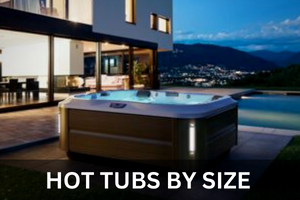
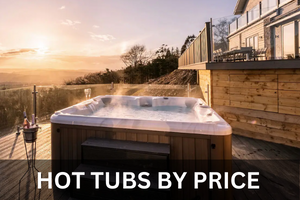
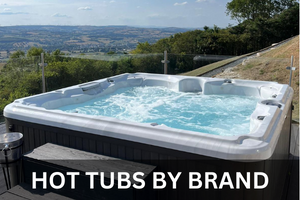
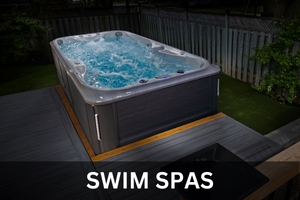
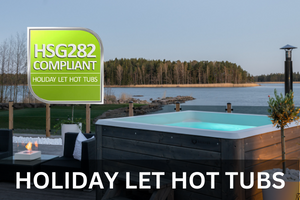
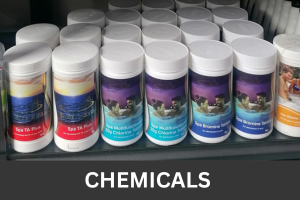
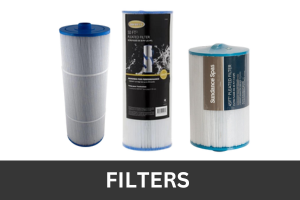
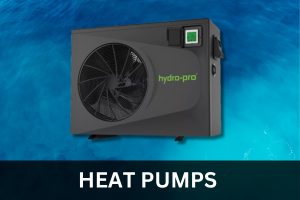
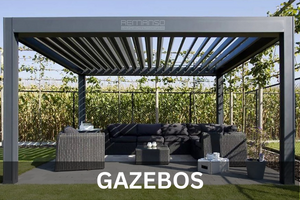
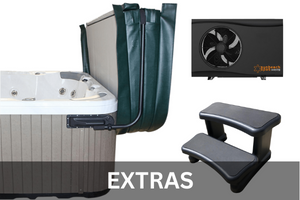
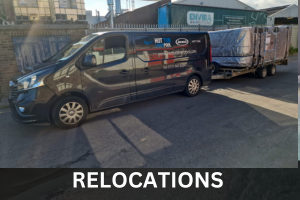
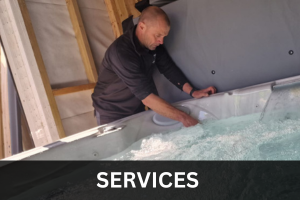
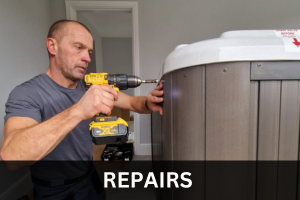
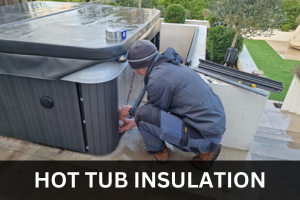
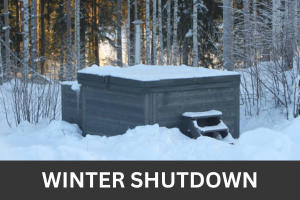
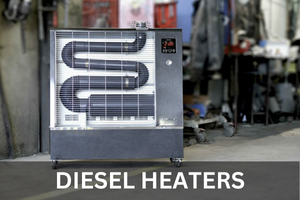
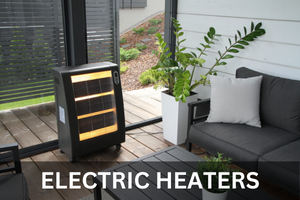
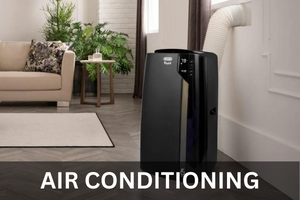
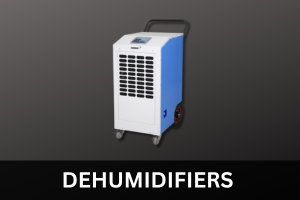
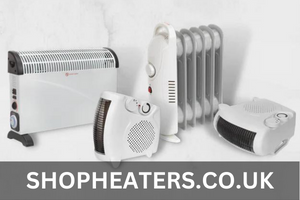
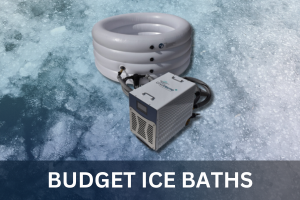
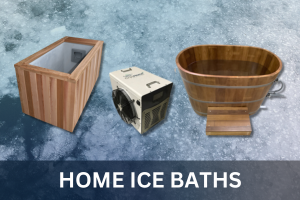
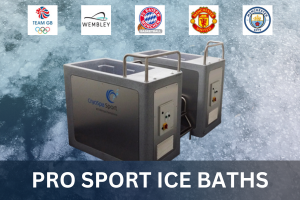
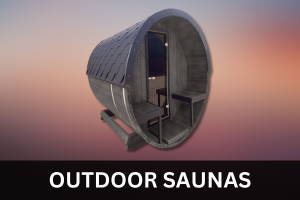
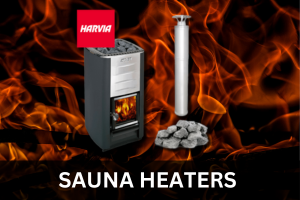
TripDustFan
January 02, 2026
This week I read a really helpful article about Coral Island day experiences for Indian tourists.
It covers best packages like parasailing, jet ski, sea walk, snorkeling, and also explains which options are more Indian-friendly.
The pricing starts at 150 THB, which is really impressive.
If anyone is planning to visit Pattaya, this write-up gives a clear idea of what to expect and how to book safely.
Worth a read for first-timers:
in This article its mentioned how to book [url=https://zeenews.india.com/consumer-connect/three-handpicked-coral-island-day-experiences-for-indian-tourists-by-tripdust-2991881.html]Coral Island Pattaya[/url] safe and best price.
The article highlights how TripDust is helping Indian travelers choose the right Coral Island experience with transparent pricing and proper guidance.
Sharing in case someone needs it.
article source:- ������ https://zeenews.india.com/consumer-connect/three-handpicked-coral-island-day-experiences-for-indian-tourists-by-tripdust-2991881.html